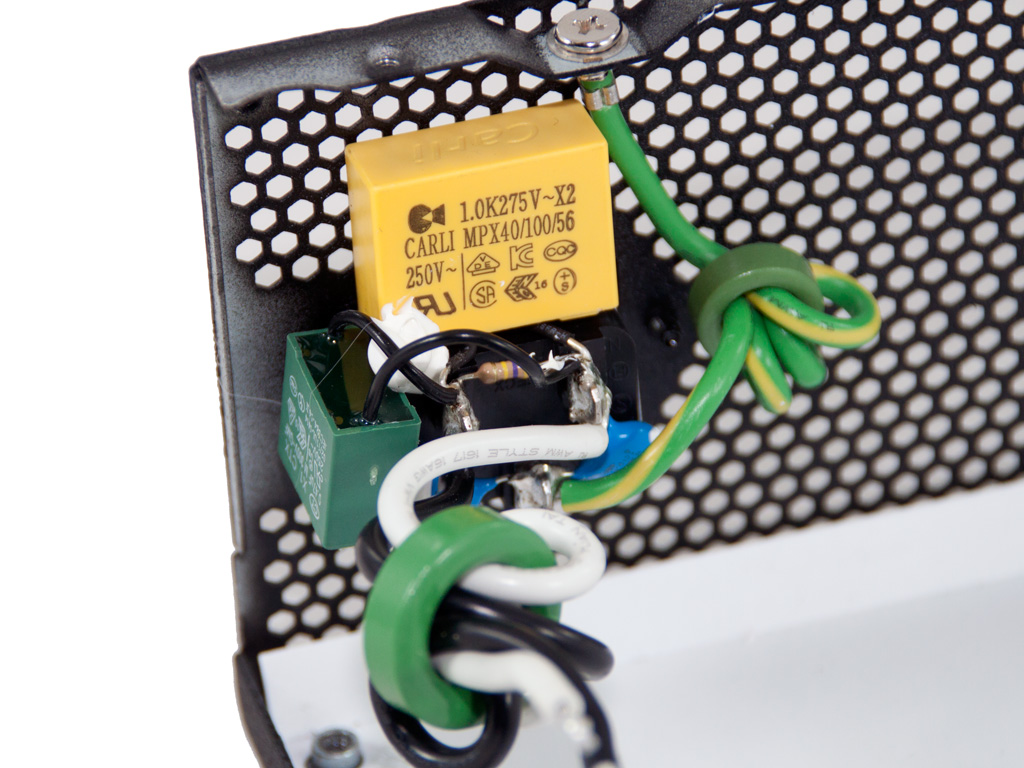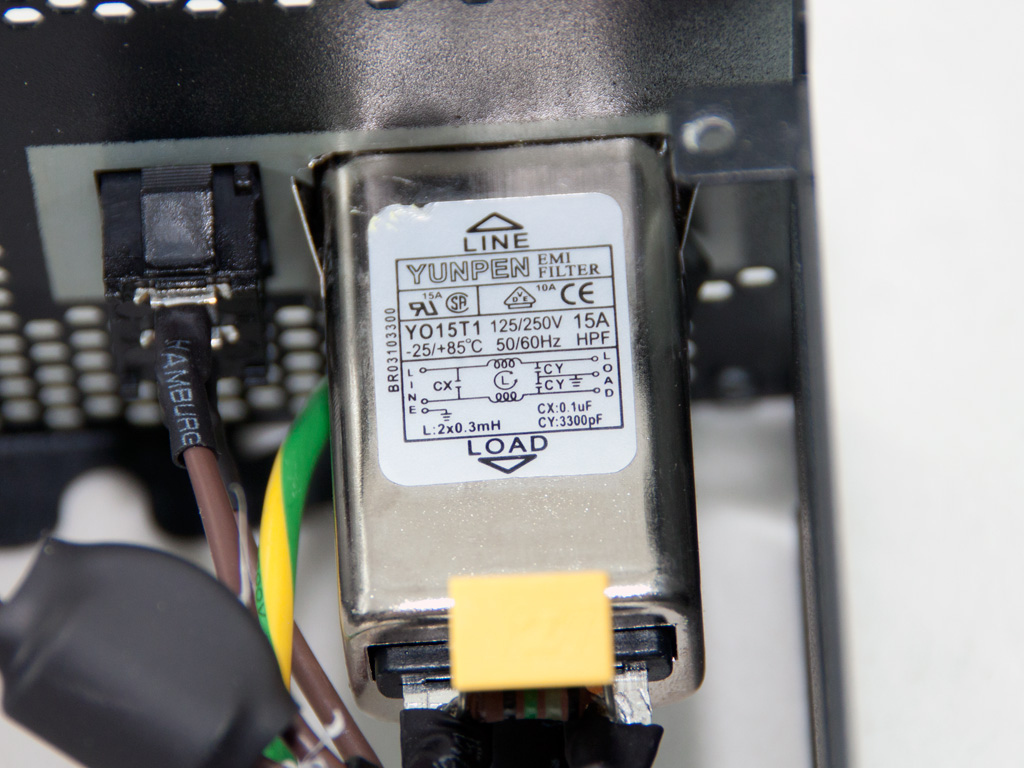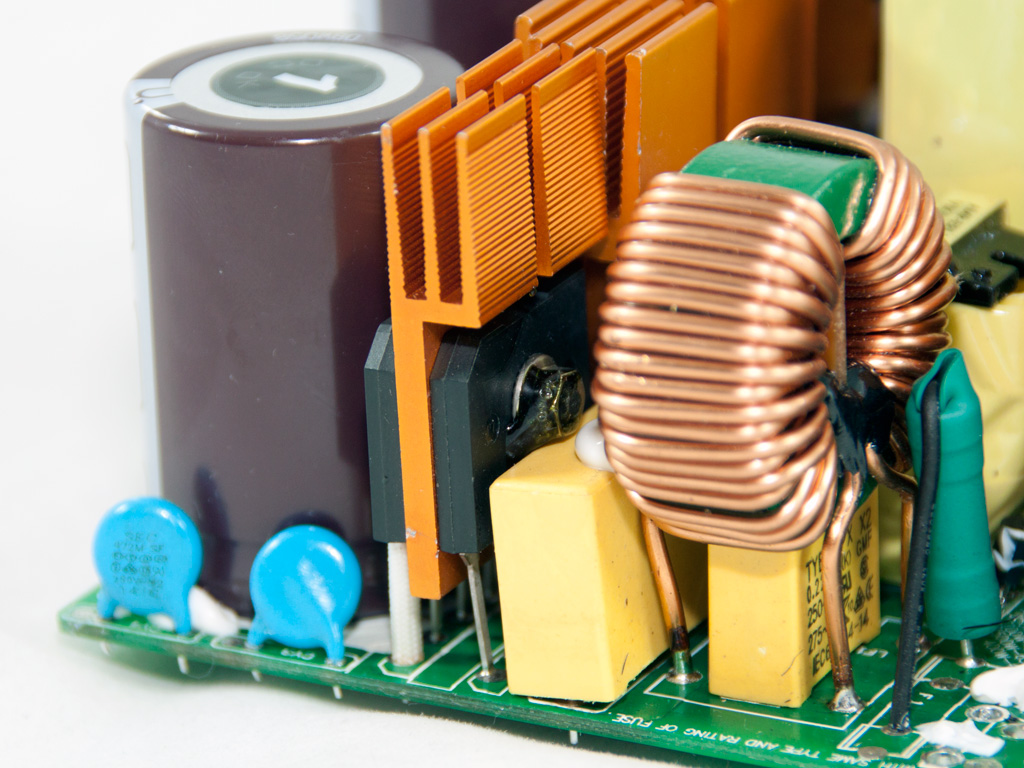Hey guys, I have some really low quality Delux psu's that don't have neither x nor y capacitors and no coil in the transient filtering stage so I thought I would mod them with commonly used capacitors if I know what specs they usually are and if I can get them. The Y's by my logic should be 1000-1500 pf 5-15kv but i have no clue about the X caps. Also I'm pretty sure these things have no varistors or thermistors, don't know at the moment have to check tomorrow. Any thoughts on varistors or thermistors? What are they used for? Where could I get them, what specs? Thanks for the help!!
Need to know common x and y capacitors used in power supplies.
Collapse
X
-
Re: Need to know common x and y capacitors used in power supplies.
I have no idea what your asking but wonder if you have Google in Macedonia?
Does the first item in this search answer your question
http://www.google.co.uk/search?q=x+a...power+supplies.
You can also google Varistors and Thermistors to get reams of information?Please upload pictures using attachment function when ask for help on the repair
http://www.badcaps.net/forum/showthread.php?t=39740 -
Re: Need to know common x and y capacitors used in power supplies.
No actually, it doesn't and yes we do have GOOGLE in Macedonia. I know what are X and Y capacitors used for, what I don't know is what are the common specs for those capacitors used generally in PC PSU's. I was googling for about two hours to find the specs but came to nothing so I thought to ask here. As for the thermistors and varistors, I thought about that while I was typing the question so I added that sub-topic too.Guns don't solve problems. I'll take 12
Comment
-
Re: Need to know common x and y capacitors used in power supplies.
I believe 2200-3300pf @ 250V is common. Most are X1Y1 rated.
Comment
-
Re: Need to know common x and y capacitors used in power supplies.
Sorry it was the second item in the link:
Filtering The AC Line
To meet the conducted RFI limits an AC input filter is usually required. The type varies widely
depending on the equipment. Where the interference is generated by a single source (such as a
commutating motor) it is best to locate the filter as close to the source as possible. If the
interference is widespread but contained in a metallic enclosure (such as in a switched-mode power
supply) the filter is best located at the AC cord entry point. Filtering is usually accomplished with
capacitors especially designed for AC use, often in conjunction with chokes or transformers of
various designs.
RFI is conducted on the AC line either symmetrically or asymmetrically. Symmetric interference
can be envisioned as a source connected between the main and neutral wires.
A line-to-line capacitor (designated as type X) properly applied is effective for this type. Asymmetric interference
is represented by a source between either main or neutral and chassis ground. A lineto-ground
capacitor (type Y) provides filtering in this case.
While the X capacitor may be of any practical value, the Y capacitors generally must be kept
to small values to limit the 50/60Hz leakage current to ground. 4700pF is a typical Y capacitor value.
Common X capacitor values are 0.1 through 1.0μF. Sometimes even higher values are required
depending on the interference frequencies. In general, improved P.C. layout practices result in
smaller required capacitor values. Also, two X capacitors of smaller value are generally better,
especially in the pi-configuration with a choke.Please upload pictures using attachment function when ask for help on the repair
http://www.badcaps.net/forum/showthread.php?t=39740Comment
-
Re: Need to know common x and y capacitors used in power supplies.
The most common Y-caps I've seen have been 2200pF-4700pF. Oversimplifying a bit, the higher values do more, but the leakage current, AC current into the green-wire ground also goes up. I think 4700pF is the upper limit for this kind of application. I've commonly seen X-caps from .1uF up to .68uF. Depending on your available space, I'd suggest .33uF or .47uF as readily available. Keep your lead wires as short as possible! I'm a bit prejudiced, I prefer Roederstein, Wima or Rifa film or paper dielectric capacitors. Panasonic (Matsushita) is also good.PeteS in CA
Power Supplies should be boring: No loud noises, no bright flashes, and no bad smells.
****************************
To kill personal responsibility, initiative or success, punish it by taxing it. To encourage irresponsibility, improvidence, dependence and failure, reward it by subsidizing it.
****************************Comment
-
Re: Need to know common x and y capacitors used in power supplies.
Thanks guys. What do you think, will it make a big impact on the quality of the power coming out of the PSU? Because I have seen computers run on these PSU's for 7-8 years without a hitch. Hell, both of my systems work on these crappy PSU's and so far so good. When you open a Delux unit there's a lot of free space if you get what I mean Guns don't solve problems. I'll take 12
Guns don't solve problems. I'll take 12
Comment
-
Re: Need to know common x and y capacitors used in power supplies.
I've seen 10uF X-class units (as well as 0.047uF ones), and the largest Y-class units I have seen go up to 0.01uF.My first choice in quality Japanese electrolytics is Nippon Chemi-Con, which has been in business since 1931... the quality of electronics is dependent on the quality of the electrolytics.Comment
-
Re: Need to know common x and y capacitors used in power supplies.



0.1uF, 0.22uF, 3300pF as you can see in the pictures are common..
Go to Techpowerup.com or jonnyguru.com or other respectable power supply review site and you'll find plenty of pictures with the insides. Techpowerup in particular also explains the components and their purpose and has larger pictures.Last edited by mariushm; 01-29-2012, 04:56 AM.Comment
-
Re: Need to know common x and y capacitors used in power supplies.
I also have seen catalogs listing X-caps as high as 10uF. And I've used Rifa PME271 Y-caps as high as .022uF (in large computer systems). Those "pretty" yellow and green boxes in the three pictures are all film dielectric X-caps., connected from line to neutral. The blue discs in the first and third pictures are ceramic dielectric Y-caps, connected from line and neutral to chassis ground (green wire). The reason I don't like ceramic dielectric safety capacitors that much is that the temperature coefficient (e.g. see page 23 of this Murata catalog) can mean a >45% decrease in the value (on top of the common +/- 20% basic tolerance of the cap!) at very realistic case internal temperatures.
Koda, these components don't have much effect on the quality of the output power to the load (i.e. your computer equipment). These components have a lot to do with whether your computer equipment interferes with other power-line connected electronic equipment around you. It's been a while, now, but I've seen power supplies with lots of open space inside. They scared the @#$% out of me, both for being unrealistically rated (a unit I wouldn't use for more than 120W-150W was rated "250W"!) and for the grossly obvious safety regulation violations. I'm rather conservative in these things, so my choice of power supply would power the computers of the roaches that survive a nuclear holocaust (is that old joke obscure?).PeteS in CA
Power Supplies should be boring: No loud noises, no bright flashes, and no bad smells.
****************************
To kill personal responsibility, initiative or success, punish it by taxing it. To encourage irresponsibility, improvidence, dependence and failure, reward it by subsidizing it.
****************************Comment
-
Re: Need to know common x and y capacitors used in power supplies.
So in fact I won't get any output quality but I won't get interference from other appliances. Didn't know that. As for the power supplies, these things are horrible too, label reads 700w but there's only 23 amps on the 12v rail so this unit in theory should be around 280w but when you take off 30% as a precaution it leaves you with only about 160w. It's a good thing I have a low power system that uses about 120-130w at peak performance. If I were to have a choice I would choose Corsair as my number one brand for PSU's, I have read plenty of good things about their units. But even the cheapest Corsair unit here is far beyond my budget so I end up using Delux which gets the job done and oddly enough these Delux crap supplies rarely damage other components when they fail.Guns don't solve problems. I'll take 12
Comment
-
Re: Need to know common x and y capacitors used in power supplies.
Actually, it's mostly the other way around. With filter components added, that power supply will interfere less with other electronic devices.... but I won't get interference from other appliances.PeteS in CA
Power Supplies should be boring: No loud noises, no bright flashes, and no bad smells.
****************************
To kill personal responsibility, initiative or success, punish it by taxing it. To encourage irresponsibility, improvidence, dependence and failure, reward it by subsidizing it.
****************************Comment
Related Topics
Collapse
-
by iMicHi,
Back after a long hiatus with some old power supplies that need repairing. I've recently picked up a couple of 386SX systems, two 486DX systems, a SiliconGraphics Indy and an iMac G3 that either have verified leaking capacitors in their power supplies, or are likely to in the near future. For the sake of simplicity, instead of tackling all at once, I'm starting with the 386's and one of the 486's.
The 386's power supplies are Seasonic SS4040A's, with caps that are visibly leaking, and 9 replacement caps per unit are required. Most appear to be from the Rubycon...-
Channel: General Capacitor Questions & Issues
-
-
by J_TI have a question - I have replaced the PSU on my own iMac Pro. However, when removing the motherboard I knocked of a 120 OHM 30% 0.3A small surface mount common mode inductor/filter (~0602 size) in the ethernet circuit near the female RJ45 port.
The closest match I can find on Mouser is 120 OHM common mode inductor at 100MHz - my question is this frequency correct for a motherboard? The schematic for the motherboard only provides '120 OHM 30% 0.3A' and the TDK part number does not return anything in google.
Sorry, I am not experienced hence a basic question.
...-
Channel: General Computer & Tech Discussion
-
-
The LM358 LM358S-13 consists of two independent, high gain, internally frequency compensated operational amplifiers which were designed specifically to operate from a single power supply over a wide range of voltages. Operation from split power supplies is also possible and the low power supply current drain is independent of the magnitude of the power supply voltage.
Application areas include transducer amplifiers, dc gain blocks and all the conventional op amp circuits which now can be more easily implemented in single power supply systems. For example, the LM358 series can be directly...-
Channel: Common Parts Library - Datasheets
10-07-2024, 04:12 AM -
-
by khelaneHello
I have a big problem and that is that in some cases when repairing active pfc power supplies I cannot work with a test lamp. I can only get help with 5 volts standby and for starting and starting I have to work without a lamp and this way there is a possibility of parts exploding and other parts being added.
Sometimes with a multimeter test the problems can be reduced to some extent, but I had several cases that had to be tested on and online and recently two varistors exploded. They had terrible resistance because the power supplies were over 800 watts.
Is there a way... -
by JaneI have faulty HP ProBook 450-G2 LA-B181P - doesnot start. When connecting a charger, the LED on plug in connector blinks from yellow to blue. (I tried to search a short on mainboard.)
What is a common resistance ( to ground ) I should measure on a coil that leads to VGA chip(RT8880CGQW) ? I measure only about 9.6 Ohms. Is it normal?03-11-2025, 05:26 AM - Loading...
- No more items.
Comment